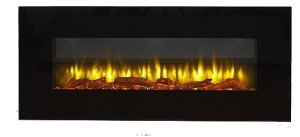There's Enough! 15 Things About Wall Fireplace We're Tired Of Hearing
The Ultimate Guide to Wall Fireplaces: Benefits, Types, and Installation Tips
Wall fireplaces are ending up being progressively popular in modern homes, using a special blend of aesthetic appeal and functional warmth. Unlike traditional fireplaces, which can need substantial space and substantial installation, wall fireplaces optimize limited locations while providing an inviting focal point. This post looks into the numerous types, benefits, and installation procedures of wall fireplaces, making sure homeowners make informed decisions.
The Versatility of Wall Fireplaces
The appeal of wall fireplaces depends on their flexibility. They can fit into different designs, from contemporary to rustic, and are ideal for little houses or roomy homes.
Kinds Of Wall Fireplaces
There are several kinds of wall fireplaces to consider when selecting the right one for your space:
Type
Description
Electric Fireplaces
Make use of electricity to produce heat, frequently equipped with adjustable settings and reasonable flame results.
Gas Fireplaces
Need a gas line and offer immediate heat with genuine flame appearances; available in vented and ventless alternatives.
Ethanol Fireplaces
Use bio-ethanol fuel, producing real flames without the requirement for a chimney or flue; eco-friendly however might need frequent refueling.
Wood-Burning Fireplaces
Standard choice that requires a chimney; provides a timeless ambiance but requires more upkeep and setup efforts.
Advantages of Wall Fireplaces
Wall fireplaces feature several benefits that attract house owners searching for an efficient heating service.
- Area Efficiency: Ideal for smaller homes or apartments, wall fireplaces can be set up at numerous heights, conserving flooring space.
- Aesthetic Appeal: They serve as eye-catching focal points, improving the interior design of any room.
- Heat Distribution: Depending on the type, wall fireplaces can provide effective heating, making them functional for year-round use.
- Setup Flexibility: Many wall fireplaces need less substantial installation compared to standard designs, permitting for easier placement.
- Environmentally Friendly Options: Ethanol and electric wall fireplaces are environmentally friendly options, minimizing emissions and promoting sustainability.
Setup Considerations
While wall fireplaces can be more convenient than traditional systems, appropriate installation is crucial to guarantee safety and efficiency. Here are some key factors to consider:
- Determine the Location: Choose a wall that can support the weight of the fireplace and enables correct ventilation if essential.
- Inspect Local Regulations: Familiarize yourself with regional building codes and guidelines concerning fireplace installations.
- Electric or Gas Line Access: For gas or electric fireplaces, make sure the availability of needed outlets or gas lines.
- Consult Professionals: Engaging a qualified professional for setup can reduce the threat of errors and guarantee adherence to safety requirements.
Installation Process
The setup process may differ based upon the type of wall fireplace chosen. Below is a basic overview of steps to think about:
- Choose the Right Fireplace: Select a model matched to your area and heating requirements.
- Prepare the Installation Site: Clear the location and mark the precise area of the fireplace on the wall.
- Electrical and Gas Connections: For electric systems, run wiring to a nearby outlet. For gas systems, connect to the gas line, ensuring all connections are secure.
- Installing: Follow the producer's guidelines to safely mount the fireplace to the wall.
- Finishing Touches: Once the fireplace is installed, incorporate it with your total home design for a cohesive appearance.
Frequently Asked Questions about Wall Fireplaces
What are the upkeep requirements for wall fireplaces?
Upkeep needs can vary based upon the kind of fireplace. Electric systems usually require very little upkeep, needing just dusting and periodic part replacements. Gas fireplaces require yearly examinations and cleansing, while wood-burning systems require routine chimney cleansing and wood storage.
Are wall fireplaces energy-efficient?
Yes, lots of wall fireplaces are designed to be energy-efficient. Electric models convert nearly all energy into heat, while gas units use a flame for heating with less waste compared to conventional wood-burning fireplaces.
Can wall fireplaces be utilized for heating just?
Definitely! In Wall Fireplaces serve as both heaters and ornamental elements, providing atmosphere while efficiently warming areas.
Are there any safety worry about wall fireplaces?
Similar to any heating gadget, security is vital. Electric fireplaces generally pose less dangers, while gas units need to be installed by experts to prevent leaks. In addition, wood-burning fireplaces require appropriate chimney maintenance.
Just how much does a wall fireplace expense?
The expense of a wall fireplace can differ considerably depending upon the type, brand, and installation requirements. Usually, electric designs can start at a couple of hundred dollars, while gas or wood designs can range from numerous hundred to a number of thousand dollars, including setup.
Wall fireplaces bring warmth, elegance, and efficiency to a variety of areas, fitting effortlessly into modern-day lifestyles. By comprehending each type's advantages and the elements included in installation, homeowners can enhance their living areas while enjoying the reassuring ambiance that a well-placed fireplace supplies.
As living spaces continue to progress, wall fireplaces will likely stay a preferred option for those looking for both design and function in their homes.
